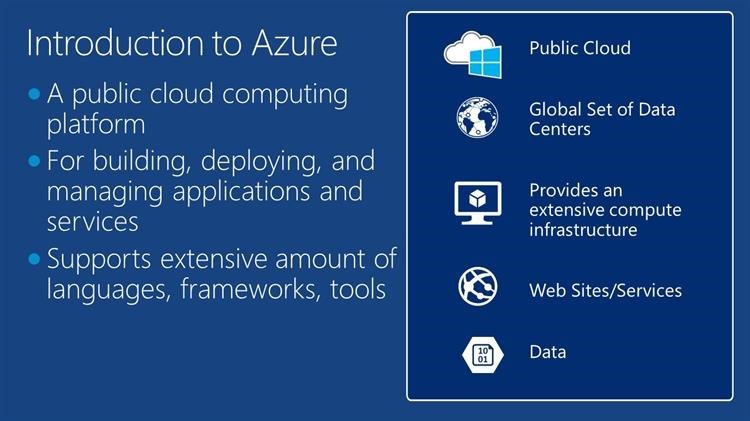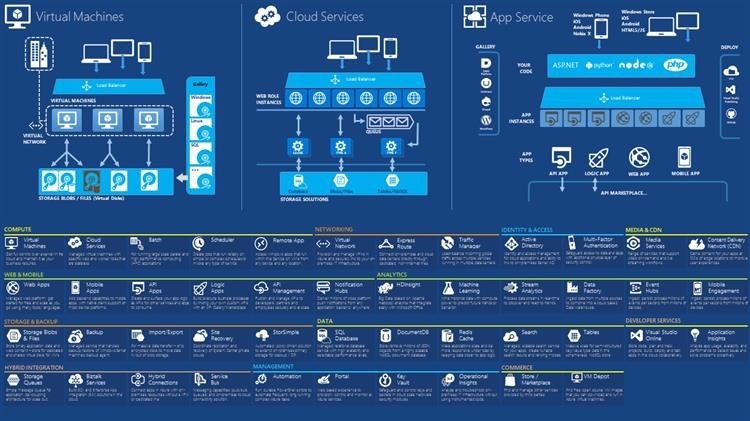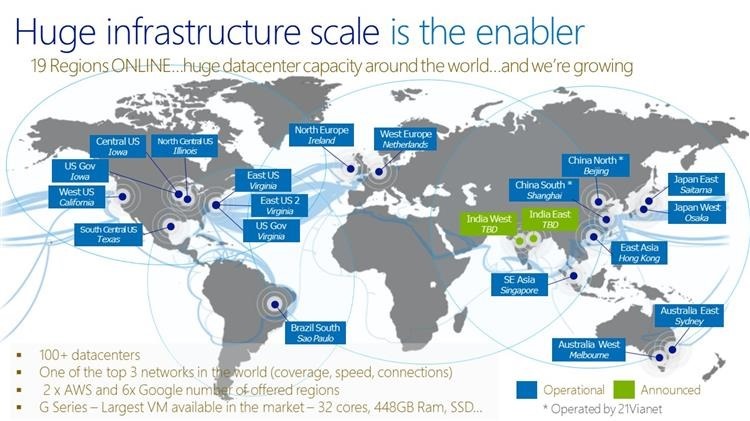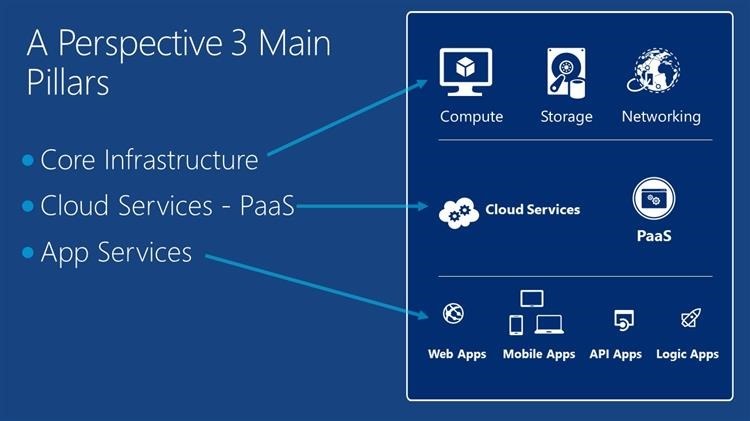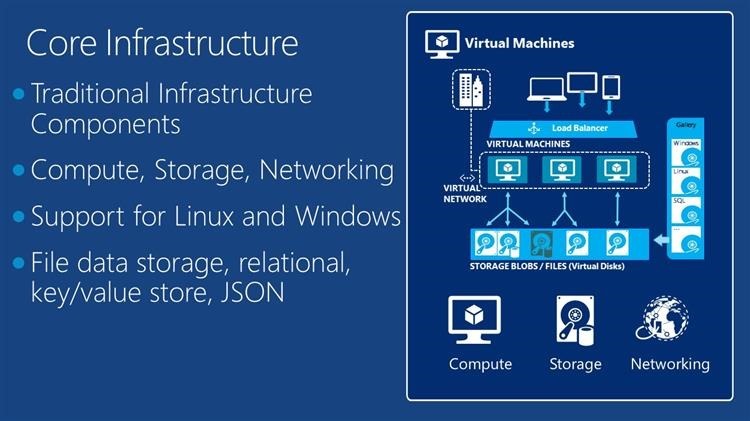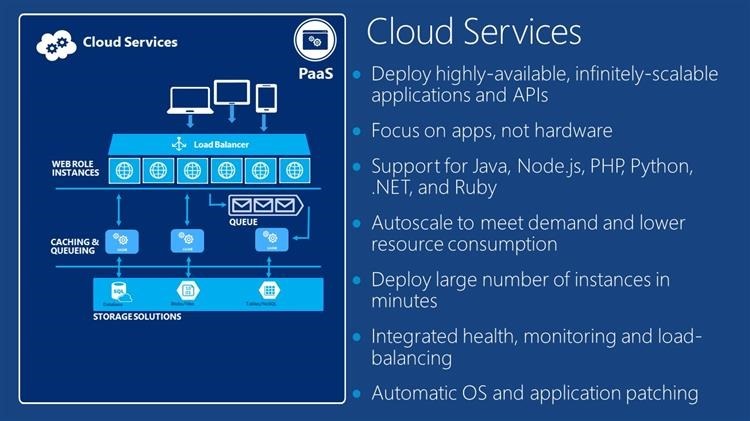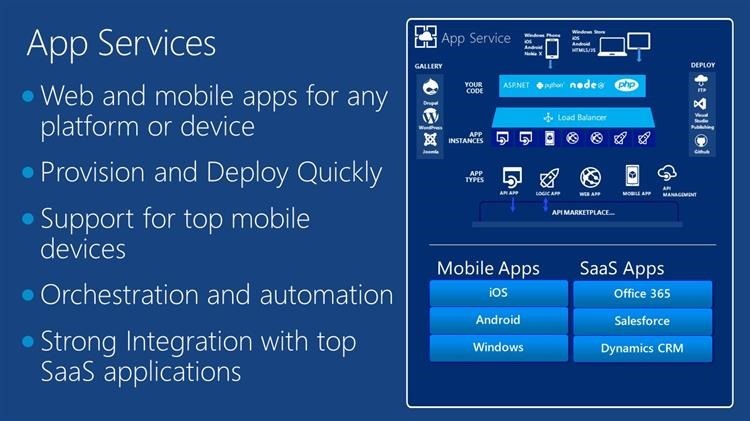An Azure Overview and Perspective
I'm producing a series of blog post that highlights the work I've done with an O'Reilly media video course. I will produce several posts a week to support this course, as seen below.
https://bit.ly/bruno-does-linux-data-java
The course is targeted towards developers who want to write Java applications on Linux and host those application in Azure.
These applications talk to today's top data stores, including:
- Azure Tables
- Azure Blobs
- Azure Queues
- SQL Server
- SQL Database
- MySQL
- PostGres
- DocumentDB
- MongoDB
- Cassandra
- Redis
High Level Overview
- Here is the Azure big picture type of slides. Don't worry, I'm going to get to real low-level coding details as these posts progress.
Slide 1 of 7 - Azure is Microsoft's public cloud
The magnitude of the platform
- I don't expect you to read the fine print here
- Although you can see the three pillars here
- virtual machines
- cloud services
- application services
- The bottom half of the image shows a tremendous depth of services and capabilities
Slide 2 of 7 - A broad and powerful cloud platform
Azure has more data centers than Google and AWS combined
- This is important for compliance reasons
- Different countries have different laws
- Having a data center in different countries allows Microsoft to conform to those country's laws
- Some of the VM's are extremely powerful
- 32 cores with half a terabyte of ram combine with SSD storage
Slide 3 of 7 - A massive global footprint
You can think of Azure as having three core pillars
- Compute, storage, networking is the starting point for any cloud platform
- Ultimately, platform as a service will rule the world, as I've commented in previous posts
- Many view platform as a service as vendor lock-in, not to mention developers like being able to control individual virtual machines
- But managing a large distributed computing platform is difficult and error prone
Slide 4 of 7 - A range of capabilities
Many companies choose to build their own platform as a service using core infrastructure
- This gives them the ability to avoid vendor lock-in because they are abstracting away the provisioning, scaling, health monitoring, networking, orchestration, scheduling and more
- The O'Reilly course that I have created speaks to the storage capabilities of Azure
- The link for this course is a top of this post and dives deep into Java, Linux using 11 different storage mechanisms, including relational and NoSQL
Slide 5 of 7 - Avoiding the vendor lock-in
Cloud services allow you to focus on your application and the data, not the underlying infrastructure
- The value proposition of cloud services is that you abstract away the details of running individual virtual machines
- instead, you can think of your compute needs as being a collection of resources is managed by a cloud-based operating system
Slide 6 of 7 - Focusing on your application, not infrastructure
Application services are optimized to support web and mobile workloads
- Many of integration points between software as a service applications are built in
- The obvious goal here is to free developers from the low-level details of supporting mobile and web applications
Slide 7 of 7 - Easily support mobile and web apps

